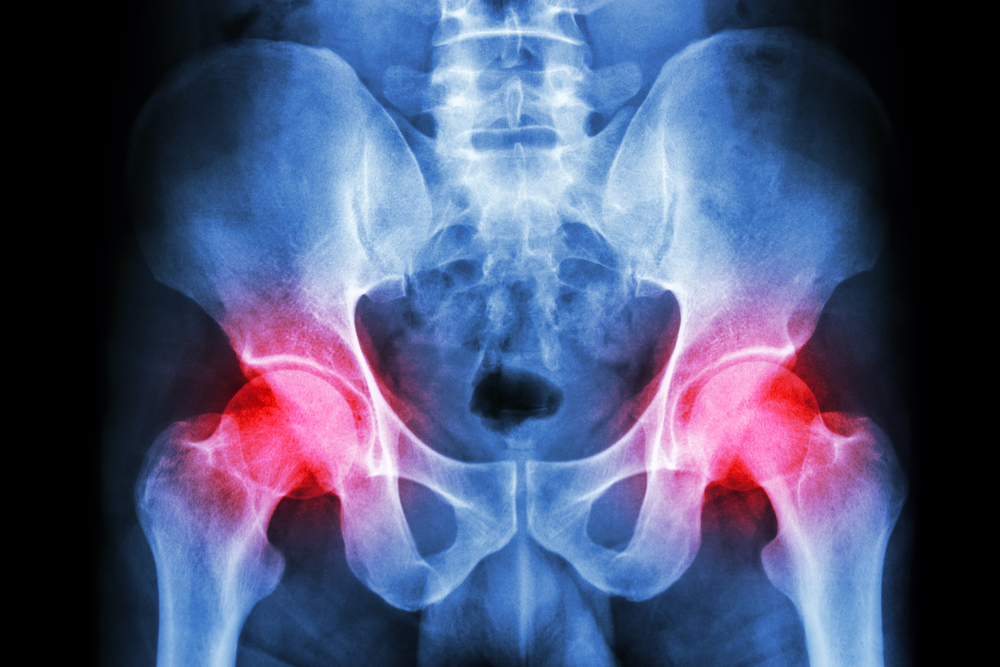Hip pain in the elderly
Joint pain in the elderly population is a common complaint, with women being affected more often than men. There are several causes of hip pain amongst the elderly. We’ve put together this quick-fire list to inform you of what can cause hip pain in our senior citizens.

Joint disease
One of the most common causes of hip pain in the elderly is joint disease that leads to degeneration of the joint surfaces and results in a poorly moveable joint. The most common condition affecting the hip is osteoarthritis (OA), affecting approximately 25% of the population. The hip is a weight-bearing joint and through a lifetime has to withstand a great deal of force passing through it on a daily basis. Many factors in a person's life can lead to the onset and progression of OA in the hip joint. An injury to the hip earlier in life can kick start a process of early degeneration leading to poor movement and the development of pain as a person journeys through the second half of life. Other factors that may lead to the development of hip OA include obesity and or poor exercise regimes (or lack of exercise altogether). Other forms of joint disease that can cause hip pain include rheumatoid arthritis (RA), gout and pseudogout.
Bursitis
The word ‘bursitis’ means inflammation of a bursa. A bursa is a small, fluid-filled sac found throughout the body around joints and areas of high movement to reduce friction. There are several bursae found around the hip. These are usually located between a bone and tendon (or other tissues) and help to maintain smooth-moving joints. Weakness or long-standing dysfunction of the gluteal and other hip-related muscles (often seen in the elderly) can lead to compression of the bursae which increases the load on them. Over time and repetition of movement, the bursae can become inflamed and cause pain, often felt on the bony, outside part of the hip. Bursitis can be treated with hands-on therapy and exercise prescription aimed at strengthening and improving movement at the joint.
Frequently, bursitis has a immune-metabolic origin. Clinically, I noticed this when working with young elite Swiss sports people back in the early 1990's, that they could suddenly develop bursitis which invariably involved some sort of predisposing immune compromise. Commonly, this involved a case of diarrhea or a cold or similar, in the 6 weeks prior to the onset of the bursitis. I've continued to notice this trend across the spectrum of ages and physical activity in the decades since. A similar trend exists for tendinopathy as well. where scientific research has demonstrated invasion of immune and fatty substances. Moreover, the bursitis and tendinopathy usually co-exist. Please see the shoulder section of this website for details on the latter and see the section on immune system and chaos for the former. Importantly, the gut biome should be consider in either case. The use of pro-biotics may be considered, such as sauerkraut, acidophilus, etc
Tendinopathy
Tendons join muscles to bones. As we age, the health of our muscle and tendon tissue declines and the efficiency of movement is affected. Similarly to bursitis, long-standing muscle dysfunction because of a failing hip joint can place excessive load on the tendon which attaches the muscle (e.g. the gluteal muscles) to the thigh-bone. If strengthening of the muscles and tendons is not achieved in the early stages of injury or disease, the fibres that make up the tendon become degenerated and deranged, resulting in a condition known as tendinopathy. This affects the tendon’s ability to withstand high loads passing through it and can lead to pain, regularly felt before and after exercise or movement. Long standing tendinopathy can lead to a tear which is common in older persons and can be the cause of much disability.
Lower back dysfunction
This is a very common cause of hip pain in the elderly population. As we age, our spines and the various tissues that play a pivotal role in its functioning can become degenerated. If a degenerated bone or joint in the spine presses on a nerve coming out of the spine, it can lead to a phenomena known as ‘radicular pain’. This is pain that may be felt in the hip (or other areas of the lower limb) but actually the problem lies in the lower back.
Fracture
Due to the increased rates of conditions including osteoporosis (loss of bone mass) and sarcopenia (loss of muscle mass), we are more prone to falling as we get older. A fall onto the outside of the hip can easily result in a fracture of the neck of the thighbone, close to where it attaches into the pelvis. As with any bone fracture, pain is a common symptom. A hip fracture may require surgical intervention and can greatly impact the health of an elderly person with increased risks of infection and death posing a real threat.
If you have hip pain and are concerned, please call us today on 02 9922 6806 to book your appointment immediately. Stay safe everyone!
Uploaded : 2 October 2020




